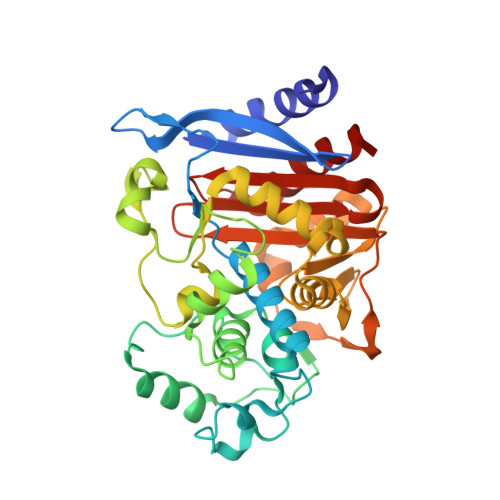Using steric hindrance to design new inhibitors of class C beta-lactamases.
Trehan, I., Morandi, F., Blaszczak, L.C., Shoichet, B.K.(2002) Chem Biol 9: 971-980
- PubMed: 12323371
- DOI: https://doi.org/10.1016/s1074-5521(02)00211-9
- Primary Citation of Related Structures:
1LL9, 1LLB - PubMed Abstract:
beta-lactamases confer resistance to beta-lactam antibiotics such as penicillins and cephalosporins. However, beta-lactams that form an acyl-intermediate with the enzyme but subsequently are hindered from forming a catalytically competent conformation seem to be inhibitors of beta-lactamases. This inhibition may be imparted by specific groups on the ubiquitous R(1) side chain of beta-lactams, such as the 2-amino-4-thiazolyl methoxyimino (ATMO) group common among third-generation cephalosporins. Using steric hindrance of deacylation as a design guide, penicillin and carbacephem substrates were converted into effective beta-lactamase inhibitors and antiresistance antibiotics. To investigate the structural bases of inhibition, the crystal structures of the acyl-adducts of the penicillin substrate amoxicillin and the new analogous inhibitor ATMO-penicillin were determined. ATMO-penicillin binds in a catalytically incompetent conformation resembling that adopted by third-generation cephalosporins, demonstrating the transferability of such sterically hindered groups in inhibitor design.
- Department of Molecular Pharmacology and Biological Chemistry, Northwestern University, 303 E Chicago Avenue, Chicago, IL 60611, USA.
Organizational Affiliation:

















